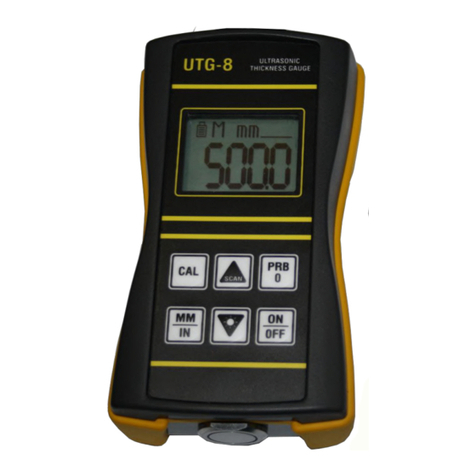2
TABLE OF CONTENTS
P.
INTRODUCTION.......................................................................................................................................3
1 PURPOSE ...........................................................................................................................................10
2 MAIN SPECIFICATIONS...............................................................................................................11
3 DESIGN OF THE FLAW DETECTOR........................................................................................12
3.1 Instrument appearance.........................................................................................................12
3.2 Structural scheme....................................................................................................................13
3.3 Appearance of the flaw detector screen.........................................................................14
3.4 Menu structure .........................................................................................................................18
3.5 "TEST" menu..............................................................................................................................19
3.6 GUIDELINES FOR OVERLOAD PROCESSING................................................................28
3.7 "CONDUCTIVITY" mode ........................................................................................................29
3.8 "GENERAL SETTINGS" menu ..............................................................................................33
3.9 VIEW..............................................................................................................................................34
3.10 "ARCHIVE"menu .....................................................................................................................36
3.11 "RESULTS"menu .....................................................................................................................36
3.12 "SETTINGS"menu ...................................................................................................................37
3.13 Set up of "CALIBRATION"menu........................................................................................38
3.14 Communication with PC........................................................................................................41
3.14.1 Running the program...........................................................................................................41
3.14.2 Program description ............................................................................................................41
3.14.3 Working with the program................................................................................................47
4 LABELING AND SEALING ...........................................................................................................49
5 COMPOSITION AND DELIVERY SET ......................................................................................50
6 SAFETY MEASURES ......................................................................................................................51
7 SETTING-UP PROCEDURES.......................................................................................................51
8 INSTRUCTIONS FOR USE............................................................................................................51
8.1 SINGLE COIL PROBE...............................................................................................................51
8.2 REFLECTION, DIFFERENTIAL PROBE ............................................................................52
8.3 ROTATION PROBE...................................................................................................................53
9 MAINTENANCE...............................................................................................................................55
10 TYPICAL FAILURES AND TROUBLESHOOTING................................................................56
11 TRANSPORTATION AND STORAGE.......................................................................................57
12 ACCEPTANCE CERTIFICATE.....................................................................................................58
APPENDIX A ...........................................................................................................................................59
APPENDIX B ...........................................................................................................................................60




























